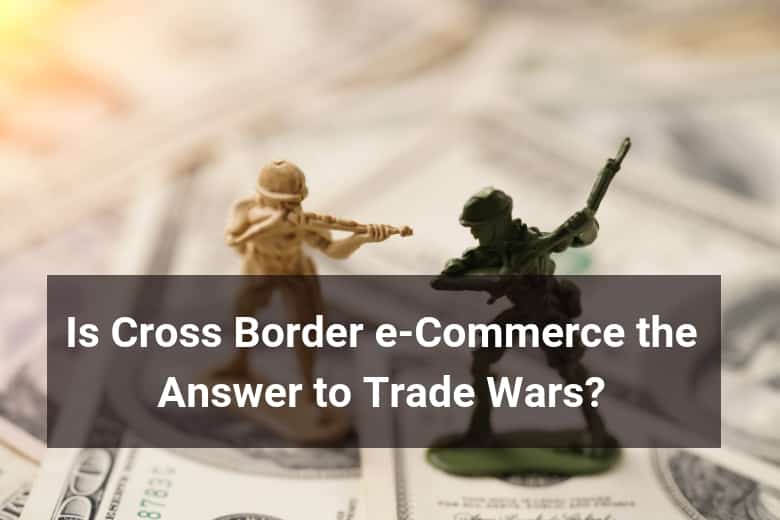Amid the aggressive trade rhetoric now emanating from Washington and Beijing and the public’s darkening mood toward globalization, one of the most interesting economic stories to emerge over the next few years may be the trend toward cross-border e-commerce, in which companies can sell products or services globally through the internet with few impediments.
The benefits of cross-border e-commerce are complex and multi-faceted.
It promises a benign environment in which companies and audiences can find each other, regardless of their country of origin. Customers can choose from a variety of different products based on their price and quality while simultaneously expending far less time and effort. Businesses have an opportunity to find new suppliers and new buyers while diversifying risks and decreasing their reliance on a single market.
The global market for cross-border e-commerce is growing fast. Estimates vary, but the Business Insider Intelligence unit expects global e-commerce to grow at a 29 percent compound annual growth rate. By 2021 the market could exceed more than $1 trillion. Such figures explain why so many companies, from electronics to clothing, are determined to expand their online global presence and transform the way people purchase goods.
China is the most popular destination of international e-commerce.
It accounts for nearly half of worldwide spending. The United States is a close second. Together these two countries constitute the world’s largest cross-border e-commerce corridor. Their policies affect not only trade with each other, but trade with all other countries as well. The question looming over all of this is the fragility of global markets to escalating trade tension. Though the current trade war is limited in scope — the United States administration has only imposed tariffs of approximately $50 billion on Chinese goods, as well as steel and aluminum tariffs on other countries — analysts worry that international e-commerce is vulnerable to a tit-for-tat trade war involving retaliatory protectionist policies. Even countries with low tariffs are at risk of being caught in the middle of a potential trade war between the economic superpowers.
Tariffs are no doubt an influential factor in a customer’s decision to purchase goods abroad rather than at home. According to Paypal’s 2018 Cross-Border Consumer Research report, prices and shipping costs both ranked highly as reasons customers cite to shop for products from other countries. Approximately 24 percent of respondents mentioned customs duties and taxes specifically. But price is only one reason why costumers may purchase goods abroad. Quality, access, and the ability to discover new products were all rated highly as well. Customers have a particular affinity for trusted brands or shops — an advantage that would be difficult to replicate elsewhere.
International e-commerce has enormous potential to address the needs of “long-tail” customers who are interested in premium goods, foreign gadgets, or niche products not yet available in their home country. Clothing, footwear, consumer electronics, and toys are the most popular types of goods involved in the flow of cross-border e-commerce. The nature of e-commerce would, therefore, seem to favor affluent customers. But as the costs and complexities of cross-border trade continue to decline, customers may conduct more of their regular shopping across borders as well. The reasons for this are complex and may vary by region. According to McKinsey, a leading global management consulting firm, shoppers from smaller cities and rural areas in China rely on cross-border sites to provide “some degree of protection from fake or counterfeit goods that often pass for offshore brands.”
Too many regulations
Far from being open and reliable, however, global e-commerce markets are burdened by over-regulation and opaque systems. These factors negatively impact a company’s ability to find the right customers and then deliver a product quickly, securely, and easily. According to a joint report from the University of Southern California and APEC (Asia-Pacific Economic Cooperation), 72 percent of micro, small, and medium businesses said it was either a minor or major problem to find willing e-commerce customers in developing economies. This challenge is exacerbated by the need to navigate around language and cultural barriers, as well as country-specific regulations. Another potential problem is customers’ concerns about security, the safety and speed of delivery, and the difficulty of returning items.
Some of these challenges will be addressed over time by the emergence of several overlapping trends that make it easier for companies to facilitate cross-border trade: the adoption of autonomous and smart logistical systems, the development of customer protection policies, and the falling costs of cloud computing and subscription-based pay-as-you-scale models. Many companies are turning to local intermediaries to solve these challenges as well. Collaboration with major e-commerce sites such as Amazon or Alibaba’s Tmall Global, which benefit enormously from network effects, can act as a potential entry point into foreign markets – although companies still face the challenge of integrating these different providers into a seamless system.
Reasons Policymakers may still hinder the Global Market
Even if these problems are addressed, however, policymakers could still hinder the nascent global market by enacting harmful regulations or taxes under the rubric of national security or industrial protectionism. Many companies are left with no choice except to alter supply chains or find new markets in response to onerous tariffs. Nevertheless, the benefits are too important to ignore. Cross-border e-commerce is a profound driver of positive-sum growth, far outpacing the growth of the economy as a whole. According to the APEC report, it is reinforced by the positive impact of technology, global reach, lower transaction costs, and efficiency gains.
In the best-case scenario, the inexorable rise of a global e-commerce marketplace could create an impetus — and its own kind of momentum — for governments to lower trade barriers and harmonize procedures and trade rules. China, for example, has created trade zones in the past to make it easier for cross-border e-commerce to flourish. If governments react to this changing trade landscape by attempting to reverse it, then they are in danger of being left behind.
Companies that want to compete in this new landscape will need to consider the costs and benefits of going global. The daunting complexity of cross-border trade means that most companies will need to plan their expansion carefully and seek help from outside experts. But they can improve their own resilience to the vicissitudes of populist trade policies by adopting measures to improve trust, reliability, and efficiency along every stage of the shopping and delivery process. That will make it easier to find and retain customers over time.
Logistics
Decided to go global? Cross-Border e-Commerce requires shipping expertise. Floship has helped hundreds of businesses and crowdfunding campaigns successfully fulfill cross-border shipping. We provide a full, end-to-end solution, fully automated and integrated with all major eCommerce platforms. Our warehouses are located in Hong Kong, right at the doorstep of China. Benefit from low tax rates and tariffs and bulk shipments to the United States below $800 are not taxed by the United States! Be quick and benefit from this loophole while you can, before policies change. Click here for more information.

Ready To Upgrade Your Logistic Solution?
Speak to Floship ecommerce logistic consultant about improving your global support chain today




